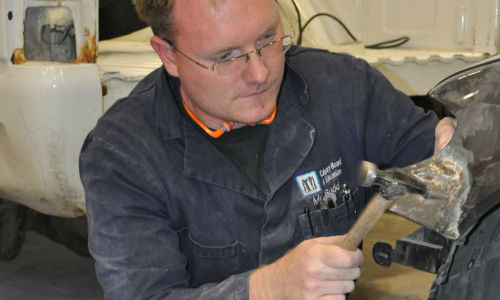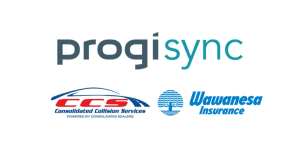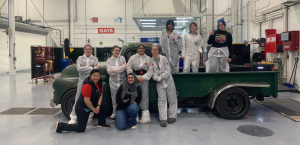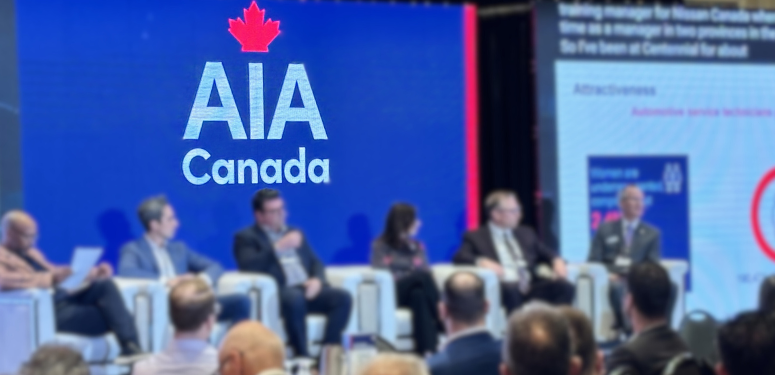By Jeff Sanford
Toronto, Ontario — January 26, 2017 — This week’s edition of Friday Fun looks into two lawsuits against Apple over its FaceTime app, an Alberta collision instructor has designed a course just for detailers, New Zealand’s industry struggles with a technician shortage and much, much more!
– Apple is facing criticism for not deploying a technology that could help cut down on distracted driving. A lawsuit has been filed against Apple related to the case of a young girl in Texas who died in a car accident. She was said to be driving at high speed while using the FaceTime app on her iPhone. The app lets people talk to others face-to-face. According to the lawsuit, Apple should have engaged a technology to prevent such apps from creating distracted driving incidents such as this. According to a report on Arstechnica, “The girl’s family claims that the iPhone maker should have deployed technology to prohibit motorists from using the [app while driving].” Another lawsuit in California make a similar claim: “Apple’s decision not to deploy a lock-out mechanism,” led to the death of a motorist in that state according to the story. The California lawsuit is not seeking monetary compensation, but, “… demands that a Los Angeles Superior Court judge block Apple from selling iPhones in the Golden State until the devices are updated to include Apple’s patented technology to lock drivers out of their phones while driving.”
According to the report, the patent in question uses a “motion analyzer” and a “scenery analyzer” to determine if the owner of the iPhone is driving a car. If the device detects the user is driving the phone is locked and cannot be used. Apple claims there are questions about the reliability of the technology.
– A story in Fixed Ops Journal suggests that, “franchised dealerships should not give up on collision repair.” According to the story, “Just two of every five U.S. new-vehicle dealerships have body shops … collision repair is a $35 billion-a-year business in the United States. That’s a lot of money to cede to competitors.” The story also notes that, “AutoNation Inc., the largest U.S. dealership group, said last month that it is unifying its 70 collision centers under its retail brand — and plans to open or acquire at least 15 more free-standing repair centers within two years.” So some dealerships are bulking up their collision repair capability while others are notching it down. According to the CEO of AutoNation, the goal of the initiative, “… is improved customer retention in the service departments of all AutoNation dealerships.” The story goes on to note that some tips from experts for dealers looking to, “… get a bigger piece of the action in collision repair.” For starters, “Don’t run your collision center as an afterthought. Instead, fully integrate your bump shop — even if it’s off-site — with not only your service department but also your sales operations. That will enable you to take advantage of both the dealership’s and the automaker’s brand value to attract customers.”
– A story on Driving notes a new course is being offered in Calgary for detailers. The story interviews Jason Budd, an auto body teacher at the Calgary Board of Education’s Career & Technology Centre (CTC) at Lord Shaughnessy High School in southwest Calgary. Budd and fellow instructor Francesco Fulginiti have, “… developed a night class for those interested in learning just what goes into a professional cleaning job,” according to the report.
“I’m all about sense of ownership, and a great deal of the value of a car is associated with how it looks, inside and out,” Budd was quoted as saying. For anyone in the city looking to update the skills of employees, “Auto detailing classes are scheduled to run the evening of February 8 and March 15. Other classes include Auto Body – Prepping, Painting and Polishing and Auto Body – Sheet Metal.” Each session involves six classes. Budd was also quoted as saying, “In an auto body shop there are detailers, but in that environment they often want to move up the ladder to other positions. But a professional detailer has a whole separate set of important skills.”
The classes will focus on cleaning, detailing, polishing and wet sanding to help make a vehicle look as close to new as possible. “Some of the students will want to get hands on and learn how to detail a car, while others will just want to understand what’s behind the process when they’re getting their vehicle detailed by a professional. Others might be thinking about moving into it as a career,” according to Budd.
 |
|
| Jason Budd has designed a course specifically for professional detailers. |
– Finding enough employees to work on the shop floor is a global problem. A story in a New Zealand newspaper notes that the country faces a shortage of what are known as, “panelbeaters.” According to the story, more than 600 apprentices are needed over the next three years to cope with, “… new car registrations and collisions … A growing number of vehicle collisions resulting from increased congestion on our roads has led to a shortage of panelbeaters, according to an industry body.” The statistic come from the Insurance Council of NZ and show the number of private vehicle related claims in New Zealand has increased by more than 5 percent to 422,429 annually since 2013. According to the story New Zealand has the fourth highest level of car ownership in the world but also one of the oldest fleets, which means the average vehicle has safety technology more than 14 years old.
– The list of automakers with stated position on diagnostic scanning continues to grow according to the latest issue of Claims magazine. The magazine has generated a chart that lays out the various positions of OEMs on diagnostic scanning. Check out oempositions.com for the chart. The article suggests checking back, “… regularly for updates as diagnostic scanning continues to take hold in the collision repair and insurance claim process.”
– A car crashed through a UK family’s front window last week. The accident lefty a “gaping hole” in the front of the house. But according to a newspaper report the family was told by the insurance company it’s “not an emergency.” The report goes on to note, “The vehicle drove into the home … on Sunday morning, running down a fence and into the family’s car parked outside before smashing into the hallway, taking out a portion of their wall and a structural beam … But despite the accident leaving a giant hole in the house, the family say insurers told them they couldn’t send anyone out to help until Monday, leaving them to deal with the problem overnight.”
– Saskatchewan Government Insurance (SGI) reported on Monday that this past December saw a fairly substantial uptick in the number of drunk driving charges. In December there was 353 offences related to impaired driving in the province compared to 308 in December 2015.
“Too many people still made the poor decision to drive after drinking in December, despite numerous transportation options offered by SGI and its safety partners, as well as extra enforcement throughout the holiday season,” the province’s self-sustaining and compulsory auto insurance program said in a press release. Tougher laws came into effect January 1 in the province requiring that drivers who are charged with a DWI will have their vehicle seized for three days.
– A bit of a tussle has emerged in the insurance industry over some advertising claims from Aviva. A report from Canadian Underwriter notes that, “The Insurance Brokers Association of Ontario (IBAO) announced on Monday that it is formally suspending its sponsorship partnership with Aviva Canada ‘for the foreseeable future.’ IBAO CEO Colin Simpson argued in a media release that ‘Aviva continues to leverage the Aviva brand for broker-distributed products and direct-to-consumer products, with an inconsistency around product availability and pricing – a strategy the IBAO believes promotes confusion for consumers.’”
A press release from the IBAO noted that the association received “overwhelming support” to take action following the latest direct-to-consumer offering leveraging the Aviva brand, a partnership with Maple Leaf Sports and Entertainment (MLSE). An Aviva Canada spokesperson was quoted as saying that the IBAO’s decision to suspend its partnership with Aviva Canada “is both surprising and disappointing. We have been consistent in communicating our strategy to de-emphasize direct in favour of partnerships like RBC and affinity deals like MLSE. We are having productive discussions with many brokers about how customers want to buy insurance and we are actively supporting our brokers with a range of innovative solutions to help them meet the evolving needs of their customers.”
– A report in the New York Times this week claims that nearly, “… 19 million Americans live in areas where auto insurance is unaffordable including a large number in the New York region.” The survey is said to be the first-of-its kind by the US Treasury Department. “The study, conducted by the department’s Federal Insurance Office (FIO), found that car insurance is generally unaffordable in 845 U.S. areas, as defined by postal codes,” according to the report.
– Cuvva is a new Scottish insurance startup that thinks it has spotted a gap in the auto insurance market and will now offer, “… hourly car insurance sold through a mobile app … designed for infrequent drivers.” According to a report on Tech Crunch, “It’s well known that many people who own a car drive it less and less these days, especially those who live in a city, and yet conventional car insurance does a relatively poor job of reflecting this in the premiums we pay … Cuvva’s new product, which opens its doors in April, wants to end the status quo that sees drivers pay for expensive insurance when their car is sat idle on the side of the street or on their drive.” The new product will target those who drive less than 4,000 miles a year.
– A debate has broken out in the pages of the National Post over the best way for drivers to merge in the case of a road where the lane narrows from two to one. Apparently Canadian drivers are too nice when it comes to merging in such situations, leading to even slower traffic. According to the latest story in the Post, “Virtually every traffic scientist agrees Canada is absolutely awful at merging through bottlenecks … In fact, it’s hard to imagine how we could be worse. At the first sign of a lane coming to an end, the Canadian strategy is to immediately cram into single file and abandon the soon-to-run-out lane.” The better and more efficient way to merge is to use the “zipper” approach, which sees some cars driving ahead in the lane that’s ending to merge at different points along the column of traffic. According to the Post, as it is, Canadian drivers, “… slowly inch ahead through the gap, they zealously defend the sanctity of the line by aggressively blocking the entry of any and all late mergers … But the late mergers always get through, forcing the queued drivers to watch with mounting frustration as BMW after BMW cuts to the front of the line … The system is dangerous, anarchic, slow … The zipper merge works by simply having drivers delay their merge until the lane has come to an end. Then, at the precise point of the bottleneck, drivers from each lane take turns entering the gap, like a zipper.”
– Automakers are said to be expressing concern that, “… it will be difficult to comply with a new law in Quebec that requires them to sell a minimum number of electric, plug-in hybrid and hydrogen fuel-cell vehicles.”
A Canadian Press report notes that a new regulation in Quebec requires that, “Starting with the 2018 model year, 3.5 per cent of all auto sales in the province will have to be from those types of vehicles. That threshold will rise to 15.5 per cent for 2025 models … Companies that don’t meet that threshold will have to buy credits from other automakers that do. It’s unclear what penalties automakers would face if they violate the law, as regulations that would define that have not been released.” Speaking at the Montreal Auto Show, the President of the Global Automakers of Canada was quoted as saying the goal is “… very aggressive … It’s going to be a real challenge to see how we’re going to find a path to get there.”
The report notes that, “While sales of electric vehicles have grown, they still account for less than one per cent of overall new auto sales in Quebec. Across Canada, they make up 0.5 per cent of all auto sales.” Michael Hatch, Chief Economist of the Canadian Automobile Dealers Association, was quoted as saying, “I don’t think that it’s realistic to impose that kind of mandate on consumers who ultimately are going to decide what they want to purchase based on their own needs.”
– What a week it has been in Trumpland. The barrage of comments, leaks, pronouncements and tweets coming from the White House have made it nearly impossible to keep up with what’s going on. Here’s a smattering of some of the interesting quotes and ideas:
– “Carmakers are already putting off investments until they know how the trade relationship between the US and Mexico will change … The added costs could make the roughly $1 billion that carmakers invest in each new assembly plant too risky until executives know what Trump wants to do …”
– Another newspaper article suggests, “Canada’s strategy, at this stage, seems to be to get out of the way. Canadian officials are holding out hope they’re not Trump’s target, and will do everything they can to make sure they don’t get sideswiped if the president goes after Mexico.”
– During his first post-inauguration call with Trump on Saturday, “Trudeau reminded the president that Canada is the top buyer of U.S. goods overall and the top buyer for 35 individual states. Trudeau has also assured Trump that Canada won’t be one of the 1,000 problems he’ll deal with daily.”
– President Donald Trump told the top bosses of the Big Three U.S. auto companies that he wants, “… a regulatory climate that ‘makes the process simpler for the auto industry … I think you’re going to see it go from inhospitable to extremely hospitable.’”
Save
Save
Save





































